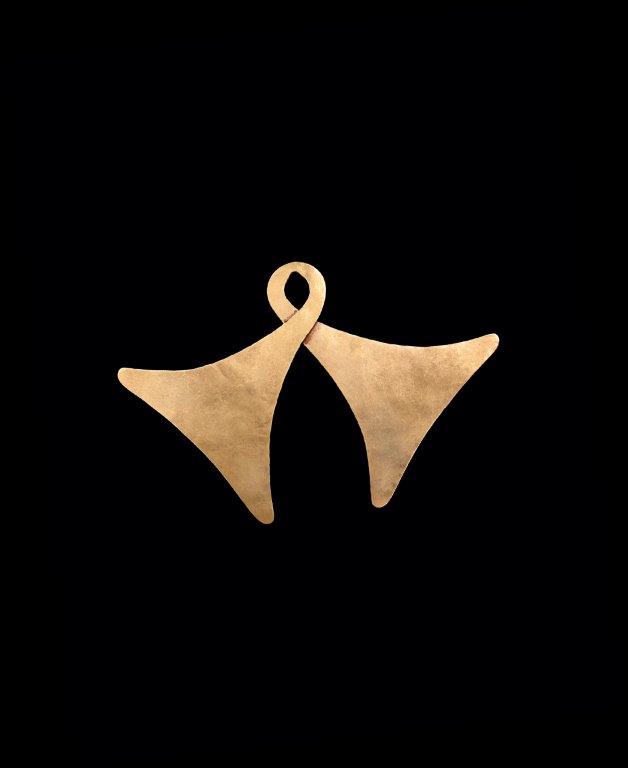This type of golden pectoral marangga, in the shape of a double axe, was mainly grown in the west of Sumba Island, but noble families in the east also counted it among the prestigious pieces of the family treasure passed on by inheritance. The marangga is one of the ornaments that embody the essence of the lineage. The lucrative trade in horses and food crops supplied by the local raja to the Dutch allowed these families to accumulate precious metal jewellery as well as imported goods such as Javanese daggers, kriss, and Indian patola textiles, sometimes obtained through East India Company merchants in search of spices and precious woods. Many textiles and fine metal ornaments accompanied the wealthiest rulers to their final resting places, which had the effect of stimulating the goldsmiths. Height 16 cm. Inv. 3669. Musée Barbier-Mueller.

